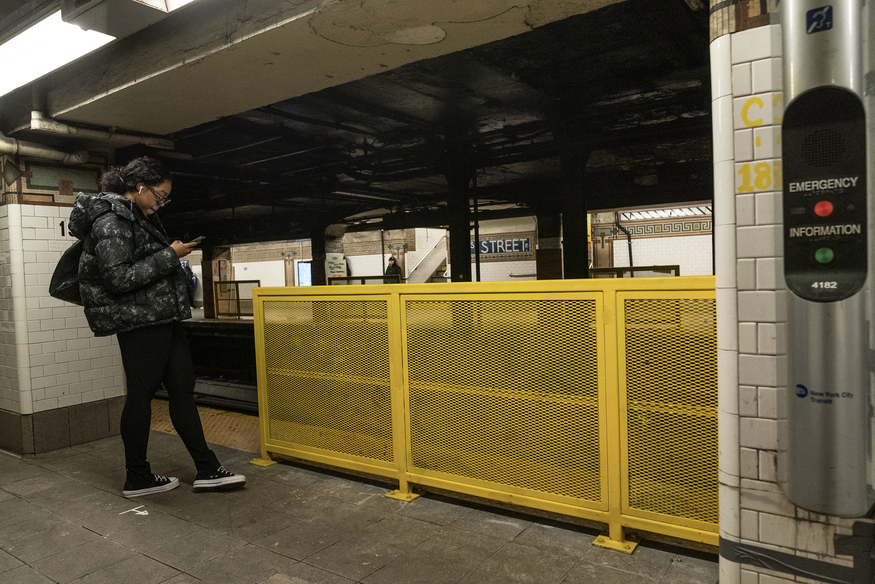The MTA has built additional metal barriers on subway platforms in Brooklyn and Manhattan since the beginning of 2024, with plans to add more by the end of the year, according to transportation authorities.
Ten stations currently have barriers at their platforms; half of these are on the L line. The MTA’s new equipment, which is a little over 4 feet tall and fastened in places that do not match up with where subway car doors open, is a quick remedy to prevent commuters from falling or being pushed into underground rails.
Following Michelle Alyssa Go’s high-profile 2022 murder at the Times Square station—where she was pushed in front of a train by a man who was subsequently found to be emotionally ill and unsuitable for trial—calls were made for the MTA to make its subway platforms safer.
In the wake of Go’s passing, the MTA released a study investigating the possibility of installing full-sized doors on its platforms that would only open in response to the arrival of a train, comparable to those found on the AirTrains at JFK and Newark airports.
The analysis discovered that installing such kinds of barriers would cost an excessive $7 billion and be feasible at only 128 of the MTA’s 472 stations.
The first metal barricades were installed by the agency at 191st Street on the 1 line in January as a less expensive option.
The MTA claims it will keep installing the smaller barriers at other stations around the transportation network because it views them as an easy method to increase rider safety.
“The goal is to install at one to two stations a month, depending on timing for the delivery of materials,” MTA spokesperson Kayla Shults wrote in an email as reported by Gothamist.











